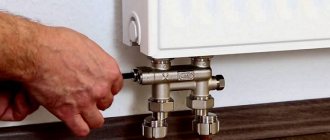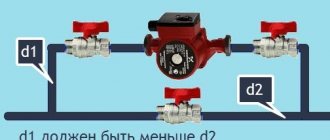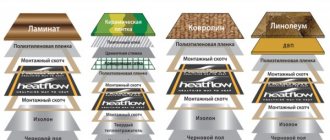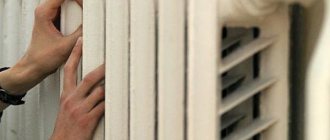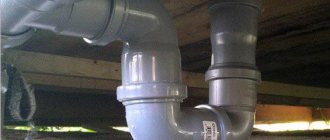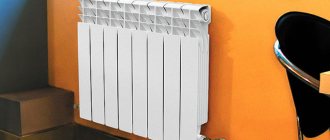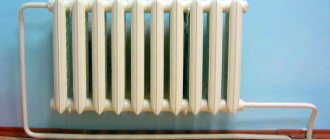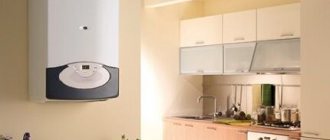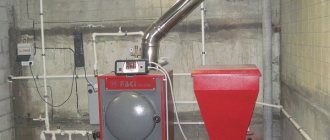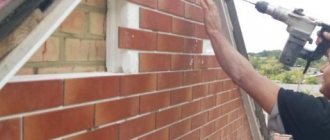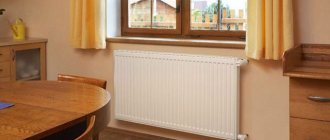The installation or reconstruction of a heating system involves the installation or replacement of heating devices. The good news is that, if you wish, you can handle this yourself without the involvement of specialists. How heating radiators should be installed, where and how to place them, what is needed to carry out the work - all this is in the article.
It is possible to install heating radiators with your own hands
What is needed for installation
Installation of heating radiators of any type requires devices and consumables. The set of necessary materials is almost the same, but for cast iron batteries, for example, the plugs are large, and they do not install a Mayevsky valve, but instead, somewhere at the highest point of the system, they install an automatic air vent. But the installation of aluminum and bimetallic heating radiators is absolutely the same.
Steel panel ones also have some differences, but only in terms of hanging - they come with brackets, and on the back panel there are special arms cast from metal, with which the heater clings to the hooks of the brackets.
These are the arms that hook the hooks
Mayevsky crane or automatic air vent
This is a small device for releasing air that may accumulate in the radiator. Placed on the free upper outlet (collector). It must be on every heating device when installing aluminum and bimetallic radiators. The size of this device is significantly smaller than the diameter of the manifold, so you will also need an adapter, but Mayevsky taps usually come complete with adapters, you just need to know the diameter of the manifold (connection dimensions).
Mayevsky crane and method of its installation
In addition to the Mayevsky crane, there are also automatic air vents. They can also be installed on radiators, but they are slightly larger in size and for some reason are only available in a brass or nickel-plated case. Not in white enamel. In general, the picture is unattractive and, although they deflate automatically, they are rarely installed.
This is what a compact automatic air vent looks like (there are more bulky models)
Stub
The side-connected radiator has four outputs. Two of them are occupied by the supply and return pipelines, on the third they install a Mayevsky valve. The fourth entrance is closed with a plug. It, like most modern batteries, is most often painted with white enamel and does not spoil the appearance at all.
Where to install the Mayevsky plug and tap for different connection methods
Shut-off valves
You will need two more ball valves or shut-off valves that can be adjusted. They are placed on each battery at the input and output. If these are ordinary ball valves, they are needed so that, if necessary, you can turn off the radiator and remove it (emergency repairs, replacement during the heating season). In this case, even if something happens to the radiator, you will cut it off, and the rest of the system will work. The advantage of this solution is the low price of ball valves, the disadvantage is the impossibility of adjusting heat transfer.
Radiator taps
Almost the same tasks, but with the ability to change the intensity of the coolant flow, are performed by shut-off control valves. They are more expensive, but they also allow you to adjust the heat transfer (make it less), and they look better externally; they are available in straight and angular versions, so the piping itself is more accurate.
If desired, you can install a thermostat on the coolant supply after the ball valve. This is a relatively small device that allows you to change the heat output of a heating device. If the radiator does not heat well, you cannot install them - it will be even worse, since they can only reduce the flow. There are different thermostats for batteries - automatic electronic ones, but more often they use the simplest one - mechanical.
Related materials and tools
You will also need hooks or brackets for hanging on walls. Their number depends on the size of the batteries:
- if there are no more than 8 sections or the length of the radiator is no more than 1.2 m, two mounting points on top and one on the bottom are sufficient;
- For every next 50 cm or 5-6 sections, add one fastener at the top and bottom.
You also need fum tape or linen winding and plumbing paste to seal the joints. You will also need a drill with drills, a level (preferably a level, but a regular bubble one will do), and a number of dowels. You will also need equipment for connecting pipes and fittings, but it depends on the type of pipes. That's all.
Installation of panel radiators
Home / All about heating / Batteries and radiators / Installation of panel radiators
June 2, 2015
Installation of a panel radiator (video)
Over the past decades, heating of houses has been carried out most often with the help of panel heating radiators; in this context, cast iron models fade into the background. Of course, the progress of the metallurgical industry contributed to the emergence and development of panel and fin radiators. Reliable and durable steel sheets, coated with an anti-corrosion layer of protection, were very quickly introduced into heating systems of various configurations and volumes.
Advantages of panel radiators
Panel steel radiators have a number of significant advantages, which has become the key to their rapid distribution and use in heating systems. Among the most positive aspects are:
- multifunctionality - the possibility of additional expansion of radiator sections allows you to fully heat the required area without any additional heating devices;
- significant efficiency - circulation of a smaller volume of coolant compared to cast iron fin batteries, while not inferior in heat transfer, but provides significant savings;
- convenient and quick temperature adjustment – if desired, the radiator is equipped with a variety of additional devices that automatically or manually regulate the temperature according to your wishes;
- huge heat transfer - the external panel radiator is designed on the principle of contact of the largest possible area with the external environment than, for example, ribbed cast-iron models. The working area of the radiator is several times larger than other batteries, which allows it to accumulate and produce an efficiency of 90%, which directly proportionally affects the speed and quality of heating the room.
The huge range of models and competitive prices leave no chance for other models. Naturally, the cost of steel batteries is significantly lower than copper, aluminum or bimetallic ones, but at the same time, of course, higher than cast iron ones, but the original appearance, weight of the alloy and final heat transfer, even at a higher price, leave cast iron models in the background.
Disadvantages of panel radiators
Panel radiators have a number of significant and competitive advantages, but there are also some disadvantages that need to be addressed:
- draining radiators for a long period of time will entail an irreversible corrosion reaction of the internal surface;
- with increased or decreased acidity in the room, which goes beyond 8 - 9.5 pH, also leads to rusting of the surface of the heater;
- a central heating system, with increased pressure and possible water hammer, has an extremely negative impact on the reliability and long-term use of panel batteries.
Specifics of technology
The design features of steel panel radiators are many vertical or horizontal channels through which the coolant passes, resulting in the formation of a heating panel, to which the convection part is in turn attached.
In the production process of panel radiators, exclusively high-strength sheet metal - steel, and modern assembly, welding and installation techniques are used. To obtain high-quality products during their manufacture, the following technological series of necessary processes is used:
- rigid stamping of side panels;
- the latest technologies for welding panels into a complete structure;
- surface treatment with anti-corrosion materials and further painting;
- for air circulation, the battery is equipped with U-shaped plates (1 - 3 pieces depending on the model).
Characteristic features are relatively small size and acceptable weight, which in turn allows installation in a convenient location and without additional reinforced fasteners.
Finished product sizes vary in the following ranges:
- width: 30 – 40 cm.
- height: 30 – 90 cm.
A very important stage in the technological process is the correct processing of the external surface and its further painting. Processing is carried out with materials that increase the anti-corrosion resistance of the product. High-quality painting is the key to the durability of the panel battery and the preservation of its appearance.
When choosing a panel battery, you must first of all pay attention to the structure and quality of painting. Since during its manufacture, the manufacturer must cover the surface with three necessary layers:
- primer;
- hardener (thermal);
- painting with high-quality and durable paint.
The entire painted surface of the radiator must be smooth, without smudges, cracks and the presence of different shades...
An important aspect when choosing a panel radiator is the correct selection of its size, depending on the volume of the heated room, since with a finned radiator it is possible to increase heat transfer by installing additional sections, and with a panel radiator - only replacing it entirely with a new type - more productive.
Choosing the right panel radiator
Externally, all models of panel radiators are very similar to each other, but there are a number of significant differences, namely:
Model marking. Absolutely all the necessary information about a panel radiator can be found by reading the markings, the main symbols of which are:
- The first digit indicates the presence of the number of panels;
- The second number is the direct number of planes with lateral edges;
- The first letter of the name (C – Purmo, I – Integral, K – Kompakt, etc.);
- Type of connection to the main line (C – side, V – bottom).
Speaking about the number of panels, we immediately understand that it is directly proportional to the power of the product. There are three main types of radiators:
- one panel (thickness – 60 mm);
- two-panel (thickness – 100-140 mm);
- three panel (thickness – 150-180 mm.)
Comparing the three types of radiators of the same power described above, it is precisely one panel structure that will produce more heat, since both of their surfaces interact with the environment. A big advantage is their size and the ability to conveniently place them under the windowsills of a house or apartment.
Two-panel ones are often more powerful than one-panel ones, about 1.5 times. This is directly related to the fact that the second panel produces only 60-70% of the first front panel.
Three-panel, respectively, are the most powerful, but also naturally the largest in size. They are rarely installed in private houses and apartments, this is primarily due to the external dimensions and increased hydrostatic resistance.
Installation and connection of a panel radiator...
There are two main categories for connecting panel radiators:
- with side (marking – C);
- with the bottom (marking – V).
Power and heat dissipation of panel batteries
Basically, all domestic models are characterized by the production of a fairly high efficiency than fin models - 80-90%.
Some useful tips. First of all, when purchasing a radiator, you need to familiarize yourself with its documentation, conditions and warranty period, and check the availability of certificates for the purchased products.
Installation of a panel radiator (video)
Photo: kharkov-online.com, avtonomnoeteplo.ru, ovks.org, tbtomsk.ru
ElsLots: advantages, characteristics and range
Electronics on guard
Niato: properties and processing methods
Self-tapping screws reinforced GDU
Where and how to place
Traditionally, heating radiators are installed under the window. This is necessary so that the rising warm air cuts off the cold from the window. To prevent the glass from sweating, the width of the heating device must be at least 70-75% of the width of the window. It must be installed:
- in the middle of the window opening, permissible deviation - 2 cm;
- distance from the radiator to the floor - 8-12 cm;
- to the window sill - 10-12 cm;
- from the back wall to the wall - 2-5 cm.
Distances from radiator to window
These are all recommendations, the observance of which ensures normal circulation of warm air in the room and its effective heating.
Read how to choose polypropylene pipes here.
How to install correctly
Now about how to hang the radiator. It is very desirable that the wall behind the radiator is level - this makes it easier to work. Mark the middle of the opening on the wall, draw a horizontal line 10-12 cm below the window sill line. This is the line along which the top edge of the heating device is leveled. The brackets must be installed so that the top edge coincides with the drawn line, that is, it is horizontal. This arrangement is suitable for heating systems with forced circulation (with a pump) or for apartments. For systems with natural circulation, a slight slope is made - 1-1.5% - along the flow of the coolant. You can’t do more - there will be stagnation.
Correct installation of heating radiators
Wall mount
This must be taken into account when installing hooks or brackets for heating radiators. Hooks are installed like dowels - a hole of a suitable diameter is drilled in the wall, a plastic dowel is installed in it, and the hook is screwed into it. The distance from the wall to the heating device is easily adjusted by screwing in and unscrewing the hook body.
Hooks for cast iron batteries are thicker. This is a fastener for aluminum and bimetallic
When installing hooks under heating radiators, keep in mind that the main load falls on the upper fasteners. The lower one serves only to fix it in a given position relative to the wall and is installed 1-1.5 cm lower than the lower collector. Otherwise, you simply will not be able to hang the radiator.
One type of brackets
When installing the brackets, they are applied to the wall in the place where they will be mounted. To do this, first attach the battery to the installation location, see where the bracket “fits,” and mark the location on the wall. After placing the battery, you can attach the bracket to the wall and mark the location of the fasteners on it. In these places, holes are drilled, dowels are inserted, and the bracket is screwed. Having installed all the fasteners, hang the heating device on them.
Floor fixing
Not all walls can support even lightweight aluminum batteries. If the walls are made of lightweight concrete or covered with plasterboard, floor installation is required. Some types of cast iron and steel radiators come directly with legs, but not everyone is satisfied with their appearance or characteristics.
Legs for installing aluminum and bimetallic radiators on the floor
Floor installation of heating radiators made of aluminum and bimetallic is possible. There are special brackets for them. They are attached to the floor, then the heating device is installed, and the lower collector is secured with an arc to the installed legs. Similar legs are available with adjustable height and some with a fixed height. The method of fastening to the floor is standard - with nails or dowels, depending on the material.
Options for piping heating radiators
Installation of heating radiators involves connecting them to pipelines. There are three main connection methods:
- saddle;
- one-sided;
- diagonal.
Connection options
If you install radiators with a bottom connection, you have no choice. Each manufacturer strictly binds the supply and return, and its recommendations must be strictly followed, since otherwise you simply will not get heat. There are more options with a side connection (more about them is written here).
Strapping with one-sided connection
One-way connection is most often used in apartments. It can be double-pipe or single-pipe (the most common option). Metal pipes are still used in apartments, so we’ll consider the option of tying the radiator with steel pipes on pipes. In addition to pipes of a suitable diameter, you need two ball valves, two tees and two bends - parts with external threads at both ends.
Lateral connection with bypass (one-pipe system)
All this is connected as shown in the photo. With a one-pipe system, a bypass is required - it allows you to turn off the radiator without stopping or draining the system. You cannot put the tap on the bypass - you will block the flow of coolant through the riser, which is unlikely to make your neighbors happy and, most likely, you will be fined.
All threaded connections are sealed with fum tape or linen winding, over which packaging paste is applied. When screwing the valve into the radiator manifold, much winding is not required. Too much of it can lead to the appearance of microcracks and subsequent destruction. This is true for almost all types of heating devices, except cast iron. When installing all the others, please do not be fanatical.
Welding option
If you have the skills/opportunity to use welding, you can weld the bypass. This is what the piping of radiators in apartments usually looks like.
With a two-pipe system, a bypass is not needed. The supply is connected to the upper entrance, the return is connected to the lower entrance, taps, of course, are needed.
One-way piping with a two-pipe system
With bottom wiring (pipes laid on the floor), this type of connection is made very rarely - it turns out inconvenient and ugly; in this case, it is much better to use a diagonal connection.
Strapping with diagonal connection
Installing heating radiators with diagonal connections is the best option in terms of heat transfer. In this case it is the highest. With bottom wiring, this type of connection is easy to implement (example in the photo) - the supply on this side is at the top, the return on the other is at the bottom.
A single-pipe system with vertical risers (in apartments) does not look as good, but people put up with it because of the higher efficiency.
Coolant supply from above
Please note that with a one-pipe system, a bypass is again required.
Coolant supply from below
Strapping with saddle connection
With bottom wiring or hidden pipes, installing heating radiators in this way is the most convenient and least noticeable.
With a saddle connection and lower single-pipe wiring, there are two options - with and without bypass. Without a bypass, the taps are still installed; if necessary, you can remove the radiator and install a temporary jumper between the taps - a squeegee (a piece of pipe of the required length with threads at the ends).
Saddle connection for one-pipe system
With vertical wiring (risers in high-rise buildings), this type of connection can be seen rarely - the heat losses are too large (12-15%).
The cost of installing steel heating radiators is from 2000 rubles.
| Name of works | price, rub. |
| Installation of a heating radiator on a threaded connection, without making changes to the supply system | 2000 |
| Installation of a heating radiator by welding with dismantling the old radiator, installing a bypass and shut-off valves, changing the center distance between the pipes. | 3900 |
| Installation of a heating radiator on a thread with dismantling the old radiator, installing a bypass and shut-off valves, and changing the center distance. | 3500 |
| Connecting the heating riser directly with dismantling the old radiator | 3000 |
| Chiselling a brick wall for a pipe | 650 |
| Grooving a concrete wall for a pipe | 800 |
| Grilling a wall or floor under a die | 500 |
| Drilling a through hole in the wall for a pipe | 500 |
| Laying pipes behind the p/m | 400 |
| Dismantling and installation of a heating riser | 3000 |
| Set of fasteners and adapters | 350 |
| Installation of an additional tap | 500 |
| Accessories for installation of heating radiators. | price, rub. |
| Minimum set (VGP pipes, bypass) | 2100 |
| Standard kit (VGP pipes, ball valves, installation kits for radiators, bypass, Mayevsky valve, brackets) | 3100 |
| Medium complexity kit (VGP pipes, ball valves, installation kits for radiators, bypass, Mayevsky valve, brackets, thermal valve) | 4500 |
| Diagonal connection kit | 6000 |
| Direct riser connection installation kit | 1000 |
| Duct extension | 1000 |
